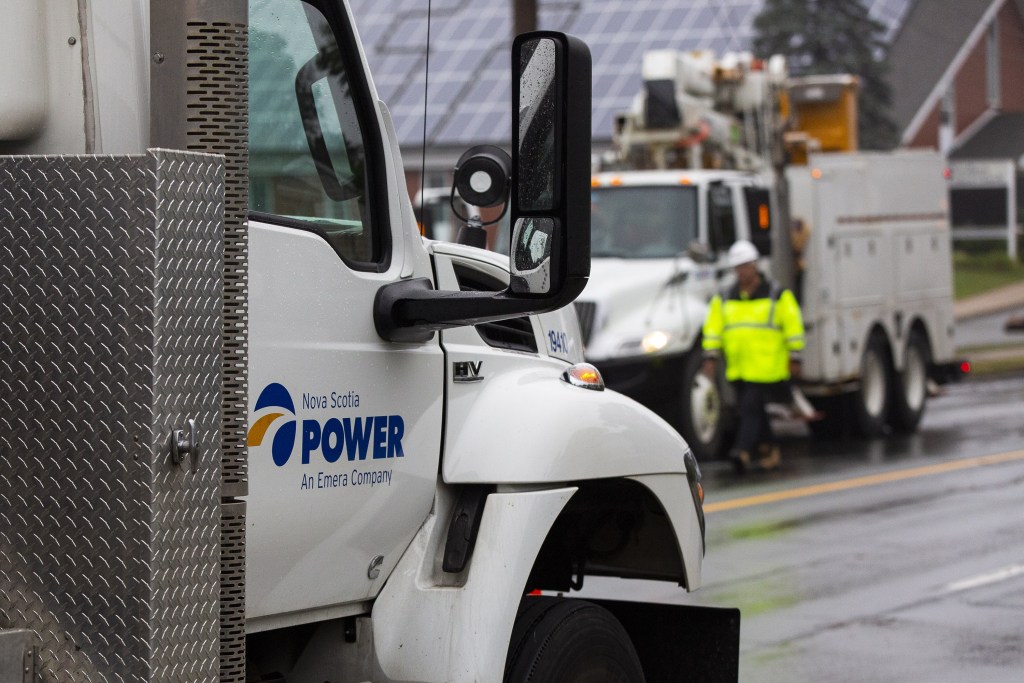
Let’s start with this news item from October 31, 2023:
Nova Scotia Power asked regulators for permission to collect $24.6 million in Fiona-related operating costs — like meals, travel and overtime — from ratepayers over an unspecified period of time… “If costs from Hurricane Fiona cannot be deferred, they will need to be expensed in the current period, which precludes N.S. Power from being able to recover its prudently incurred costs,” Nova Scotia Power told regulators. “This would have a significant impact on the financial health of the utility.” (Emphasis added)
The short version: they want us to pay so that company shareholders can continue to enjoy their guaranteed profits.
What is they want us to pay for? Their failures.
Consider this, from an August 17, 2023, story by my colleague, Jennifer Henderson:
Nova Scotia Power must pay a fine of $750,000 for failing to meet performance targets in 2022…
Last year was the sixth consecutive year that Nova Scotia Power failed to meet certain metrics. The penalty is double the $350,000 the company was charged in 2021 but well short of the $25 million maximum contained in an amendment to the Public Utilities Act passed by the Houston government last April…
Of 14 established performance standards, the utility did not meet five designed to improve reliability and customer service.
In its decision, the [Utilities and Review Board] wrote:
As previously stated by the Board, customers are entitled to receive an appropriate level of service for the rates and fees they are charged by the utility. It is not acceptable that non-compliance of the performance standards has become a normal occurrence…
[D]espite the changing climate, the need for a reliable electrical grid is at least as important (and likely more important) than ever. If more frequent and damaging storms are becoming the ‘new normal’, NS Power needs to ensure that its performance, not just its investment plans, keeps up with these changes.
…The UARB reviews performance standards annually. Next year, the regulator says failing to meet performance standards in 2023 could cost the utility up to $25 million in fines as a result of a change to the Public Utilities Act.
In June 2020, after the UARB had ordered Nova Scotia Power to refund customers $250,000 for failing — still/again — to live up to performance standards around service and reliability in the previous year, Henderson reported:
“Weather intensity is not a new phenomenon, nor is it an anomaly, since it has been observed for several years,” according to the written UARB decision signed by chair Peter Gurnham, vice-chair Roland Deveau, and board member Stephen Murphy. “With that knowledge, it is incumbent upon NS Power to ensure that it has taken sufficient measures to improve the resiliency of its network to withstand higher stresses and improve, or at least maintain, overall service reliability. Performance standards were established to promote continuous improvement. Changing weather patterns should be viewed as a challenge for improving performance, not as a reason for accepting deteriorating performance levels.”
And then there’s this, from a column I wrote in November 2021:
Rather than doubling efforts to improve its customer service and reliability, Nova Scotia Power’s deep thinkers have quadrupled down on a campaign to convince the provincial regulator to loosen those standards instead to ones they might actually be able to meet without breaking a sweat or — more importantly — wasting a lot of customer revenue that could be better spent on executive salaries and corporate dividends.
So, what about last month’s request by Nova Scotia Power that I noted at the beginning of this column?
If the UARB agrees, it means NSP customers — us — will be on the hook for another $25 million so that shareholders of our private monopoly electric utility can continue to receive their guaranteed 8.75 percent return on equity.
Recall that the company’s ongoing failures to provide reliable electrical service dates back to at least post-tropical storm Arthur in 2014 when 250,000 of 400,000 customers were left in the dark for up to a week because “the winds were higher than predicted.”
In 2016, the UARB established a set of more than a dozen performance and customer service benchmarks it ordered the company to meet. Those included everything from the frequency and length of power interruptions to the percentage of customer bills the company could estimate.
The company has failed to meet even half of those benchmarks every year since.
And yet its shareholders still pocket their 8.5 percent, thank you very much.
So far, the UARB has barely brushed air past the company’s wrist with fines that would be personal chump change for some of its Emera parent company’s top executives.
It’s past time for the UARB to demand accountability from the cossetted utility company, time to say a flat no to Nova Scotia Power’s current $25 million request, time to use its new powers to fine the company the maximum $25 million for its next round of reliability failures, and time to tell shareholders they won’t get their guaranteed return on investment again until company delivers the service Nova Scotians have a right to expect.
Now that might finally get their attention.
***
A version of this column originally appeared in the Halifax Examiner.
To read the latest column, please subscribe.






 STEPHEN KIMBER, a Professor of Journalism at the University of King's College in Halifax and co-founder of its MFA in Creative Nonfiction Program, is an award-winning writer, editor and broadcaster. He is the author of two novels and eight non-fiction books. Buy his books
STEPHEN KIMBER, a Professor of Journalism at the University of King's College in Halifax and co-founder of its MFA in Creative Nonfiction Program, is an award-winning writer, editor and broadcaster. He is the author of two novels and eight non-fiction books. Buy his books